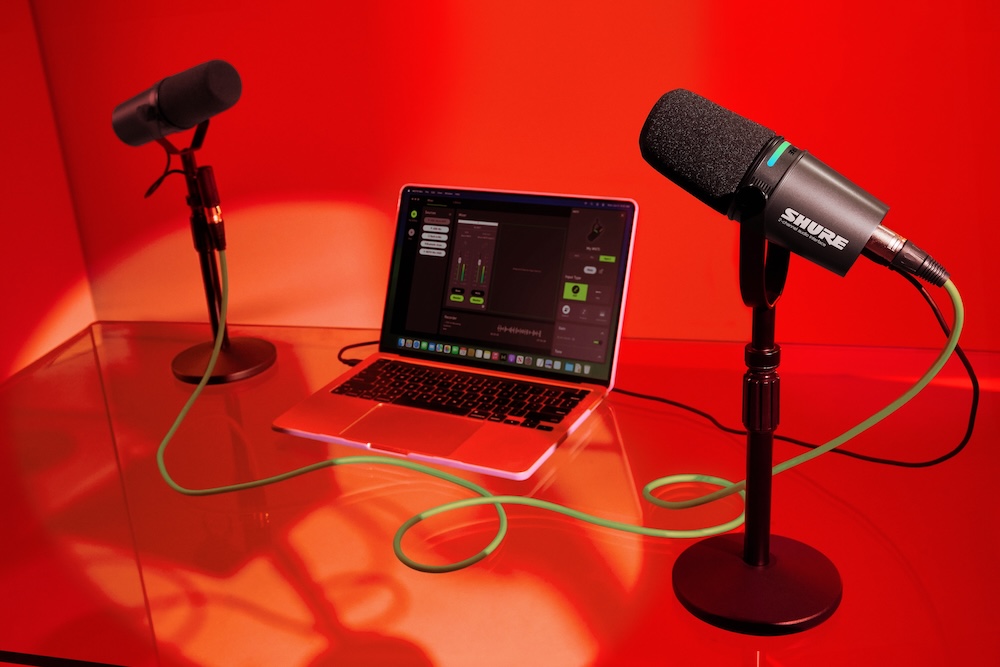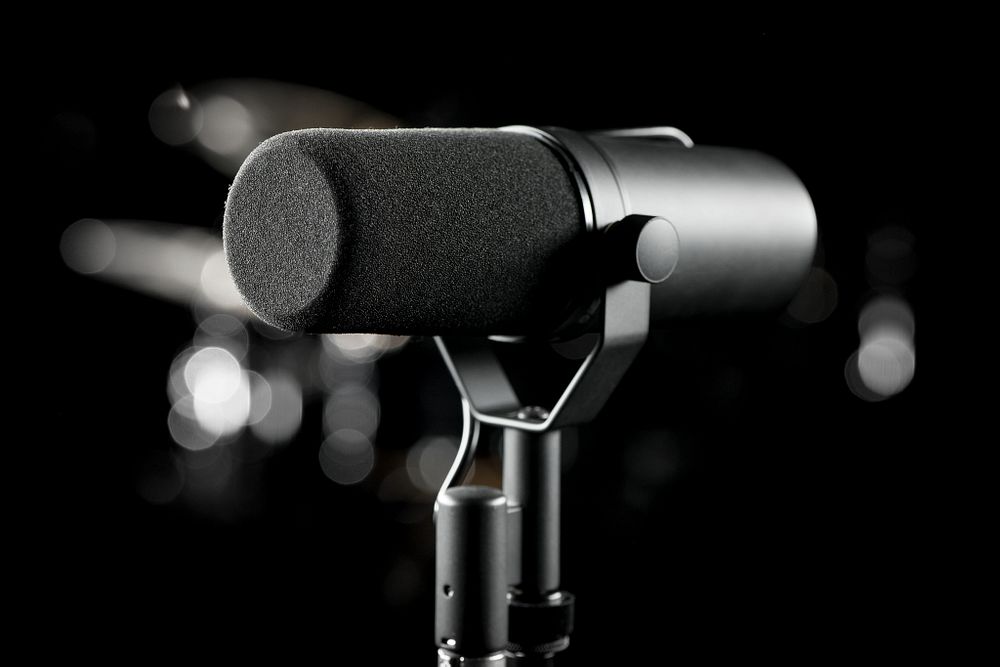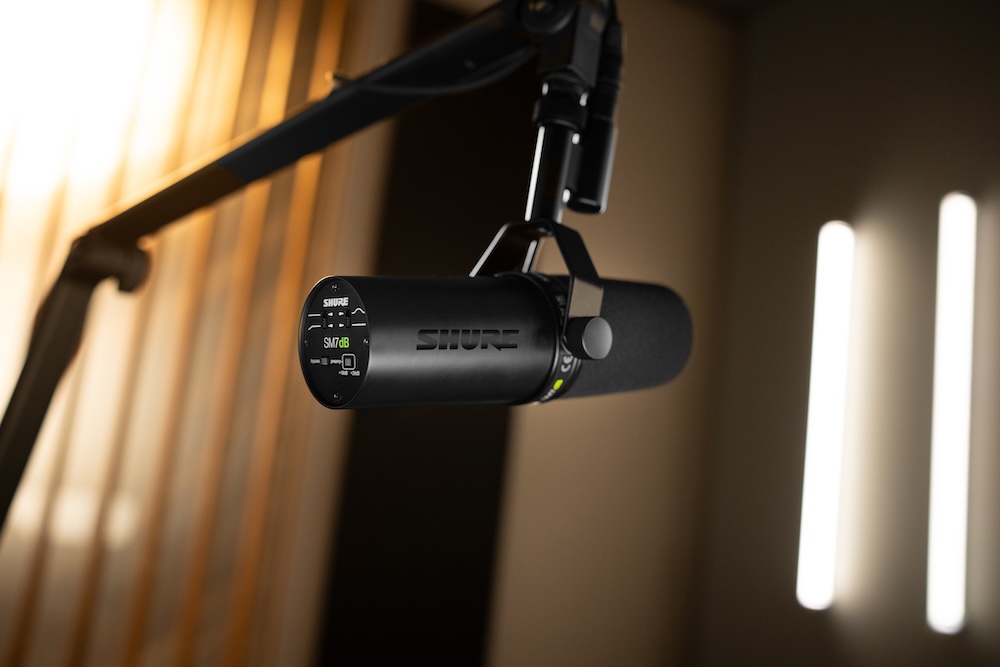Choosing a Microphone for Podcasting

Listeners often judge a podcast by its sound quality. No matter the format or topic of your podcast, your listeners are comparing your sound to what they hear on the radio and other podcasts produced by major broadcast outlets. Ironically, your goal is to make your podcast sound so good that no one notices how it sounds. If people notice the sound, there's probably something wrong with it.
Fortunately, the equipment and techniques needed to produce a professional-sounding podcast are affordable and available. You don't need a big budget to get professional sound, but you do need a good room and a good microphone.
Optimizing Your Space for Recording
The room is a sonic hurdle for most DIY podcasters who record in their living space or workspace and don't have access to a professional recording studio. In these spaces, there is usually some background noise from air vents, appliances, computer fans, and other sources that will be audible in a recording. Our ears normally tune out these sounds when we're in the room, but they are noticeable on a recording. Even in a quiet room, reflections from the walls, ceiling, and floor (if it's not carpeted) can cause your voice to sound hollow. You sound like you're in a box because you are in a box. Moving the mic closer to you (within two to 12 inches) helps because it makes your voice louder in relation to the noise and reflections.
Choosing Between a Dynamic and Condenser Microphone
When it comes to microphones, you often hear debate over which type is better: dynamic or condenser. This comes down to two technical characteristics: output level and frequency response. Condenser microphones usually are more sensitive and provide a higher output level. A higher output level can be useful because the signal doesn't need to be amplified as much by the mixer. Amplification adds hiss, and less-expensive mixers generate more of it.
Condenser mics have better response to high frequencies than dynamic mics. This gives condensers a crisp, detailed sound; however, it can be a problem for podcasters who record at home. When you use a condenser mic, you risk picking up too much of the shhh sound from air vents or extra noises from the lips and tongue. Dynamic mics naturally mask these irritants just like a soft-focus filter on a camera hides blemishes.
The Four Characteristics of a Good Podcasting Mic
The microphone is the first link in the connection between you and your audience. But what makes one mic more appropriate for podcasting than another? It really comes down to four things:
- A cardioid pickup pattern to reduce noise. Cardioid mics are less sensitive to sound from the sides and back, which reduces pickup of room noise and reflections. Tighter pickup patterns like supercardioid or shotgun mics may reject even more noise, but they require your mouth to stay focused on a much smaller area to avoid noticeable variations in level. This is difficult for most people.
- A pop filter to prevent popping Ps. This can be a layer of acoustically transparent foam inside the mic or an external Popper Stopper™ between you and the microphone. Nothing makes you sound like an amateur more than a pop when you say professional.
- A shock mount that can filter out low-frequency vibrations. These vibrations can come from touching the table or typing on the keyboard while the mic is live. Some mics have internal rubber isolation mounts around the element, while others rely on an external suspension mount that cradles the mic in elastic straps or bands. A high-pass filter switch on the mic or the mixer adds a second layer of protection from unwanted thumps and bumps, and reduces low-frequency room noise as well.
- The ability to customize the sound of the mic. Let's face it: some people have a good radio voice, and some don't. Some of us record podcasts in a dedicated studio space, while others have to do it at the dining room table. If your voice or your recording location leaves something to be desired, being able to adjust the mic to enhance your voice and de-emphasize room noise can be a real advantage. Some microphones have switches that reduce low-frequency bass pickup, which is good for reducing room rumble or a boomy sound when you work the mic really close, or boost the upper midrange to enhance the clarity of duller voices. Digital microphones can go even further, with an internal equalizer that lets you shape the frequency response of the mic to reduce room noise and a compressor that smoothes out variations in speech level so that your listeners aren't constantly reaching for the volume control.
Four Shure Podcasting Products by Budget
Here are four Shure tools that make great podcasting partners. Three are microphones ordered by price, and one is an audio interface that can expand your options with your existing mic if you have one you like.
MV7+ Hybrid USB/XLR Podcast Microphone (from $279)
Best for: Those who want flexibility with broadcast-ready sound.
The MV7+ has a hybrid USB/XLR design ideal for podcasters, streamers, and creators. Its cardioid dynamic capsule uses voice isolation to stay focused on your voice in any space. Enhanced Auto Level Mode adjusts your gain in real time, and onboard DSP features like a Digital Popper Stopper™, noise reduction, and reverb make recording easier than ever. The colorful LED touch panel adds visual control for mute or metering, while USB-C and XLR outputs offer flexibility for any setup. With MOTIV Mix app support and a sleek design, the MV7+ delivers broadcast-ready sound for $279 MSRP. Check out the MV7i and MV7x variants with an onboard interface and a more affordable XLR-only output respectively.

SM7B Dynamic Vocal Microphone (from $399)
Best for: People who want the same mic that big-name podcasters use, and have a pro setup to go with it.
The SM7B has been a legend in radio stations around the world for decades. It has the warm, mellow sound that large dynamic mics are known for, and it's designed for working up close and personal: you need to be within two or three inches. This means that it has a fairly low output level, however, so you'll need a good interface or mic signal booster to get the best out of it. Not one but two foam windscreens are included to keep P-popping under control, and low-cut and high-boost switches on the back of the mic let you tailor the sound to your voice and room. An audio icon, it remains the favorite for anyone seeking that broadcast-standard vocal character.

SM7dB Active Dynamic Microphone (from $549)
Best for: Podcasters wanting that legendary tone without extra gear.
The SM7dB offers the iconic tone of the SM7B with a built-in, low-noise preamp for easier gain management – no extra gear required. The switchable +18 dB or +28 dB boost lets you plug straight into most audio interfaces, or you can bypass the preamp entirely to use it just like the original. It keeps all the features pros love: a cardioid pattern, wide flat response, bass roll-off, presence boost, and internal shock and pop filtering. Whether you’re in a treated studio or DIY space, the SM7dB delivers professional vocal clarity with less hassle at $549 MSRP.

MVX2U Digital Audio Interface (from $129)
Best for: Anyone looking to upgrade an XLR mic with DSP and USB connectivity.
The MVX2U is a sleek, powerful interface that connects any XLR microphone to your computer or mobile device via USB-C. The MVX2U includes onboard digital signal processing (DSP) with presets for speech, singing, and instruments, along with real-time gain adjustment (it has the oomph to run an SM7B!) and phantom power for condenser mics. It also integrates seamlessly with the MOTIV Mix app for tone shaping and monitoring. Compact and plug-and-play, the MVX2U is an ideal choice for podcasters or streamers upgrading their mic without adding bulk or complexity – it can be yours for just $129 MSRP.









